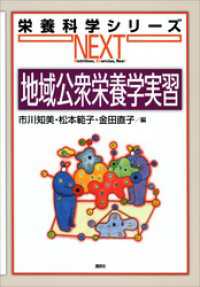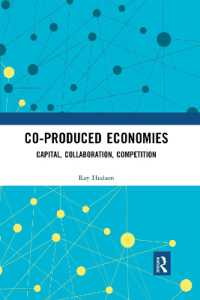Full Description
Making space for imagination can shift research and community planning from a reflective stance to a "future forming" orientation and practice. Cultural mapping is an emerging discourse of collaborative, community-based inquiry and advocacy.
This book looks at artistic approaches to cultural mapping, focusing on imaginative cartography. It emphasizes the importance of creative process that engages with the "felt sense" of community experiences, an element often missing from conventional mapping practices. International artistic contributions in this book reveal the creative research practices and languages of artists, a prerequisite to understanding the multi-modal interface of cultural mapping. The book examines how contemporary artistic approaches can challenge conventional asset mapping by animating and honouring the local, giving voice and definition to the vernacular, or recognizing the notion of place as inhabited by story and history. It explores the processes of seeing and listening and the importance of the aesthetic as a key component of community self-expression and self-representation.
Innovative contributions in this book champion inclusion and experimentation, expose unacknowledged power relations, and catalyze identity formation, through multiple modes of artistic representation and performance. It will be a valuable resource for individuals involved with creative research methods, performance, and cultural mapping as well as social and urban planning.
Contents
1. An introduction to the art of cultural mapping: Activating imaginaries and means of knowing Part I. Contextual terrain 2. Mapping and contemporary art 3. Shadowing passage: Cultural memory as movement form Part II. Self and place 4. Sketch and script in cultural mapping 5. Spacing events: Charting choreo-spatial dramaturgies 6. Modeling the organic: Cultural value of independent artistic production 7. Other lives and times in the palace of memory: Walking as a deep-mapping practice Part III. Community and Place 8. Performative mapping: Expressing the intangible through performance 9. Herbarium: A map of the bonds between inhabitants and landscape 10. Cultural practices and social change: Changing perspectives of the slums in Belo Horizonte through cultural mapping 11. Mapping as a performative process: Some challenges presented by art-led mapping that aims to remain unstable and conversational 12. Mapping the intangibilities of lost places through stories, images, and events: A geoscenography from milieus of development-forced displacement and resettlement Part IV: Cultures of Place 13. Local flâneury and creative invention: Transforming self and city 14. Exploring routes: Mapping, folklore, digital technology, and communities 15. Folkvine's three ring circus-y: A model of avant-folk mapping 16. From Earthrise to Google Earth: The vanishing of the vanishing point Part V. In closing: Artists in conversation 17. Creative cartographies: A roundtable discussion on artistic approaches to cultural mapping








